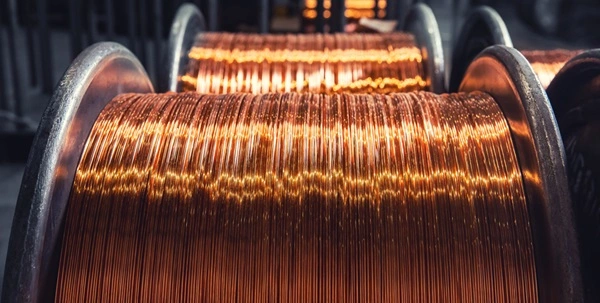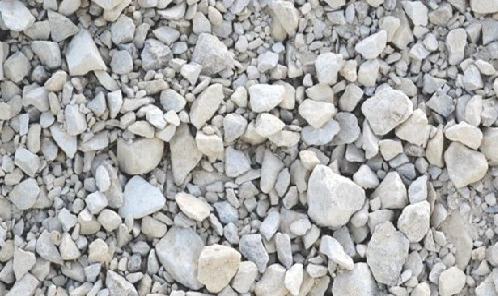The metal of the future is “Copper,” which is critical in driving industrial progress and technology innovation. Copper has a vital usage in modern industry since, being multipurpose, it may be found in all ranges of specialties, from construction, electrical wiring, and communication to telecommunications. In 2024, when the people of India will be marching forth into the future, we need to integrate the significant and countless contributions of the top five copper-producing states, individually or collectively, in creating a separate industrial structure and the country’s prosperous economy.

1. Rajasthan
Leading by miles as far as copper production is concerned, Rajasthan emerges as the most significant copper-producing Indian state. The massive reserves of copper within this state, particularly in the Khetri area, have made it one of the major players in the copper mining sector. Moreover, a conducive regulatory framework coupled with investments in strategic mining infrastructure has given rise to unprecedented levels of copper output for Rajasthan. Unlike this, it will serve as evidence of maintaining global nature and planning for future mineral distribution and ecological control during the development process based on the nationwide environmental responsibility principle.
2. Madhya Pradesh
In this regard, the state comes right after Rajasthan, and Madhya Pradesh is the second highest copper production state in India. Supported by modern technologies and skilled manpower, a well-established mining ecosystem exists in the area with significant copper deposits in places like Malanjkhand. The state’s active approach to promoting mining exploration and developing industry partnerships has contributed to its recognition as a major copper-producing center. Furthermore, its strategic location and well-developed transportation network further boost its competitiveness within the copper market.
3. Jharkhand
Jharkhand is famous for mineral wealth and can be seen as one of the leading states in India concerning the national production of copper. The state’s mining sector centers on its copper reserves, which exist mostly in Singhbhum, East Singhbhum, Hazaribagh, etc. Over time, Jharkhand has witnessed increased output due to concerted efforts towards improved mining efficiencies and adherence to regulations. Besides, the focus on building links between mining activities and the local community emphasizes commitment to sustainable development.
4. Gujarat
Western India’s Gujarat is one of India’s largest contributors to copper production. Domestic and foreign investments have been attracted to Gujarat due to its significant copper reserves, especially in areas such as Kutch and Banaskantha. The availability of all forms of infrastructure, friendly Government policies for business, and a large pool of skilled labor have made Gujarat suitable for copper mining activities. Furthermore, this state’s proactiveness in the exploitation of technologies and innovation-oriented learning has given it an upper hand against competitors in the copper market.
5. Tamil Nadu
Finally, Tamil Nadu wraps up India’s copper production industry in an appreciable position. Tamil Nadu is now a major player in the nation’s output of copper due to reserves found mainly around Salem and Dharmapuri. Ensuring responsible extraction methods through environmentally friendly practices that align well with global expectations improves its reputation as a reliable copper producer. Also, the underlying value-added initiatives have created a sophisticated framework for Tamil Nadu to establish other downstream industries within its entire copper production ecosystem.
Conclusion
Rajasthan, Madhya Pradesh, Jharkhand, Gujarat, and Tamil Nadu dominate India’s copper-producing horizon, driving industrialization and securing a better future for posterity. As the world continues to seek more of it due to technological advancements and infrastructure development, these states will be crucial in defining India’s path towards prosperity and sustainability.
FAQs
Q: What makes Rajasthan remain ahead in terms of copper production?
Ans: Rajasthan remains the top producer of copper because of its rich deposits in places such as Khetri. Furthermore, the state has passed favorable legislation and invested heavily in modern mining infrastructures, thus contributing largely to the growth of copper mines.
Q: Which areas do Madhya Pradesh produce copper?
Ans: Madhya Pradesh is the second largest sate in India with notable copper reserve, particularly in the Malanjkhand area. This area is now considered one of the most important centers for copper production, which contributes significantly to India’s overall output.
Q: Why is Jharkhand considered a prominent copper-producing state?
Ans: However, being a state in Jharkhand, that area generates fortune because of copper extracted from Singhum, East Singhum, and Hazaribagh. The state has ensured that the copper industry is well preserved by introducing production reforms and observing legal frameworks.
Q: What are some strategic advantages Gujarat possesses in copper production?
Ans: Gujarat is located adjacent to other mining hubs, and an infrastructural setup would make it possible for copper mining entities to invest as the cost would be lower. Yet, implementing the rules that favor the companies and adequately skilled people in the copper industry is one of the most determinants of its high competitiveness.
Q: Which areas within Tamil Nadu contribute to the State’s Copper Production?
Ans: Tamil Nadu has concentrated copper reserves in places such as Salem and Dharmapuri. In line with global standards, this ensures a responsible approach to the metal’s production through sustainable mining practices and environmental conservation that match international norms.
Q: What kinds of initiatives do these states take towards supporting sustainable practices for the achievement of sustainable copper mining
Ans: Many states have introduced measures to promote sustainable forms of mining, including stringent environmental guidelines, community involvement strategies, and technology investments that reduce environmental impact while maximizing resource use efficiency.
Related Topics
- Top 5 Silver Producing States In India
- Top 5 Iron Ore Producing States in India
- Top 5 Mica Producing States In India
- Top 5 Bauxite Producing States In India

